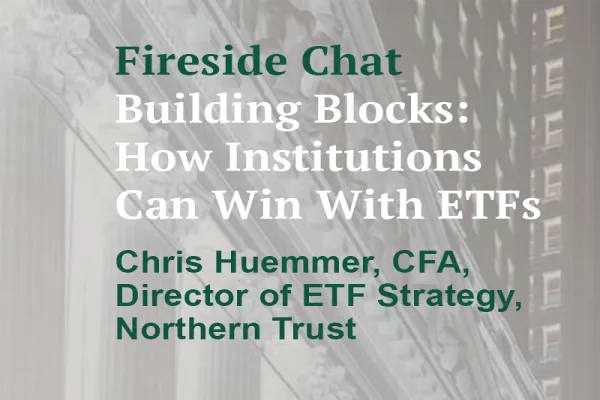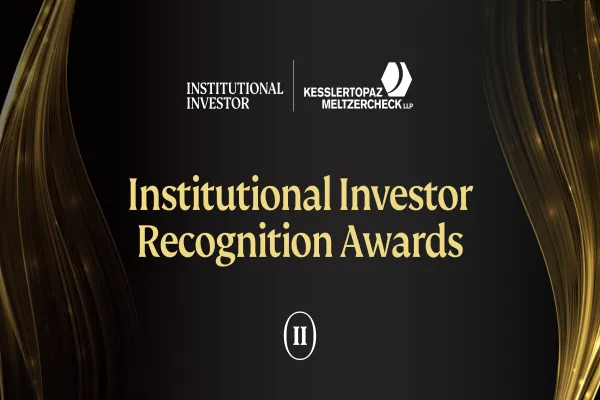At the Public Funds Roundtable in Los Angeles, Institutional Investor honored Andrew Palmer with the Visionary Recognition for his commitment to his clients. As Chief Investment Officer at Maryland State Retirement and Pension System (SRPS), he listened to them to anticipate their needs and develop and execute long-term plans to meet them. Most recently, in his 10 years with the Maryland State Retirement Agency, ending in June 2025, he successfully authored and implemented a vision to resource and build and investment program that will continue to meet the future needs of the System, while simultaneously addressing the Board’s long term sustainability goals.
He is a graduate of University of Maryland, where he received his bachelor's degree and master's degree. After he completed the graduate program, he joined the investment industry with ASB Capital Management, first as Fixed Income Secor Specialist, then Director of Fixed Income Investments; prior to his current role, he spent nine years at Tennessee Consolidated Retirement System (TCRS), which he left as Deputy Chief Investment Officer.
 How did you get into the investment industry?
How did you get into the investment industry?
Like most of the good things that have happened in my life, there was a large element of good fortune. In the early 1980’s, I was studying for a PhD in Economics at the University of Maryland. For a number of reasons, I decided to pause that process after earning a master’s degree and get some real-world experience, to decide on a further course of study. For the most part, I was considering economic research positions at federal agencies or the “Beltway Bandits” consulting companies.
During that process, I answered an ad for a “Bond Analyst” that listed a master’s in economics as a qualification. I wasn’t sure what the job entailed, but after the first interview with the man who would hire me and be my mentor for the next 35 years, I was hooked. He gave me a copy of Inside the Yield Book by Martin L. Leibowitz and Sidney Homer and Where are the Customers Yachts? by Fred Schwed. From that point on, it has been a nonstop learning and growth experience, and I soon began my career as a corporate bond credit analyst.
How do you deal with the challenge of liquidity?
We manage liquidity across multiple time frames. On a daily basis, we must meet operational needs such as capital calls, margin requirements, rebalancing, and manager transitions. We also plan for periods of market stress, when capital calls may accelerate, distributions slow, margin requirements spike, and correlations across asset classes rise sharply.
To prepare for such scenarios, we conduct liquidity forecasting, stress testing, and scenario analysis. We maintain a liquidity “waterfall” to prioritize sources of cash and ensure we can meet obligations under a range of conditions. Although these exercises provide comfort that it is highly unlikely, we will have a liquidity failure, it could happen that cash needs force sales of liquid assets at distressed prices. To minimize the impact of selling low, we work to develop a suite of derivative capabilities to enable the System to maintain its liquid beta exposures through most market environments.
How do you factor risk into strategic asset allocation?
Risk is one of the first considerations in strategic asset allocation, right alongside return. The process begins with a series of discussions with the board of trustees to understand its risk tolerance, particularly around drawdowns and the risk of not meeting actuarial return targets over various time horizons.
Using those inputs, we work with our investment consultant to model a range of asset mixes that can achieve our target returns, while staying within acceptable levels of average risk. From there, we expand the analysis to assess how different mixes perform under tail-risk scenarios and varying economic and climate conditions. The goal is to select an asset allocation that not only meets our long-term return and risk objectives, on average, but also provides resilience across a wide range of potential outcomes.
How did you structure your governance?
Much of the System’s investment governance is set by statute, and although it evolves gradually, it provides a strong foundation aligned with leading industry practices. Our board of trustees includes a representative mix of investment professional, plan sponsor, and member perspectives, and its investment committee benefits from the insight of three highly qualified public advisors. The board holds budgeting authority for the investment division and its staff, while the CIO has statutory authority to hire and terminate investment managers.
Within that framework, I've worked with the team to establish a clear and disciplined internal governance process. Asset class teams are responsible for structuring their respective portfolios and conducting manager due diligence. Although manager selection originates with the asset class teams, the process is collaborative, with ownership shared across the division and final approval by the CIO. These investment decisions are supported by dedicated risk, compliance, and governance functions to ensure alignment with our long-term objectives. The structure is designed to meet the System’s strategic KPIs and deliver a return profile that exceeds expectations set in the asset-liability study.
Where does ESG fit in, if anywhere?
Although the field has made meaningful progress over the past decade, ESG integration continues to evolve and is still establishing consistent frameworks that align with traditional measures of risk and return. At SRPS, we’ve been deliberate in building out our ESG practices over time, guided by the UN Principles for Responsible Investment (UNPRI).
We view ESG considerations as tools to enhance investment decision-making, not as standalone drivers. Our approach treats ESG factors as important elements of risk management, with an emphasis on how our active managers identify and address those risks.
What makes you an innovator?
I can answer that in two ways. What makes me want to innovate is my conviction that complacency is a performance killer. Overreliance on tradition and rule of thumb practices turn you into an alpha source for other investors. Looking for new ways to approach problems and integrating concepts from unrelated fields helps me differentiate our investment process.
Another way to say this is that I recognize that only a few organizations can have the top talent and resources in the business. Trying to identify their practices and imitating them, with the expectation of matching or exceeding their performance, likely will lead to failure; however, understanding those processes and finding methods to take advantage of our organization’s inherent strengths can lead to success.
The second answer is to provide evidence of innovation. Innovation is the art of integrating existing knowledge in a new way and in a way that fits the organization. Using that definition, I have been working to find a set of investment processes and products that build on the best of what we see in our managers to create a high performing team and portfolio. We have a Maryland way to approach which assets we should manage ourselves, how to incorporate climate and ESG risks, how to measure risk and use it to make better investment decisions, and how to incorporate emerging managers into our portfolio as instruments to help achieve our investment goals.
What advice would you give an incoming Chief Investment Officer?
Understand yourself, understand the organization that you are joining, and move decisively to set yourself up for success. Every CIO brings different strengths to the role, and aligning those with the organization’s needs is key to creating long-term value.
The following has been edited for length and clarity.
Market Intelligence Is Independent of the Institutional Investor Magazine Newsroom.






